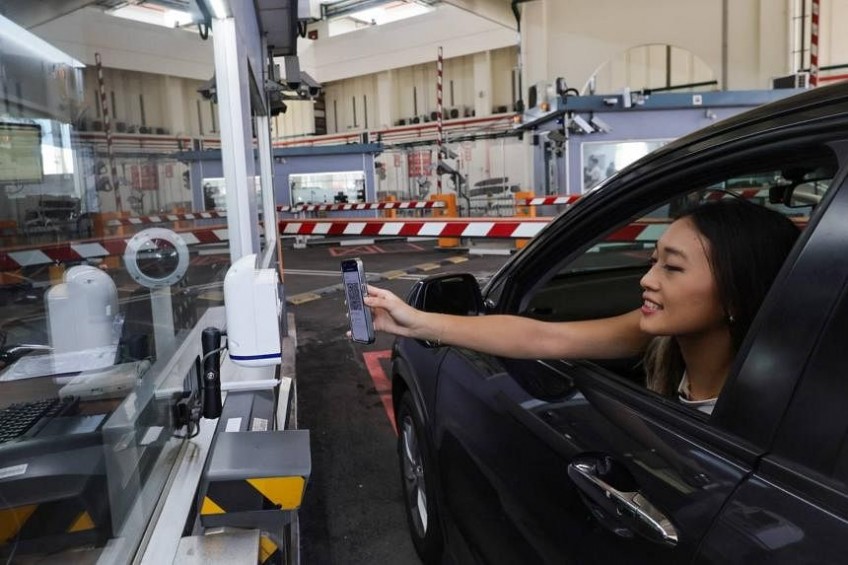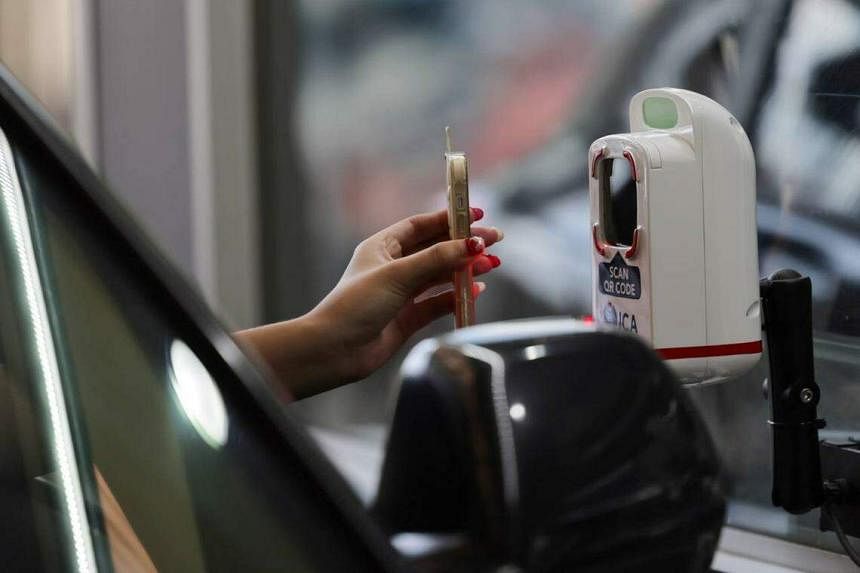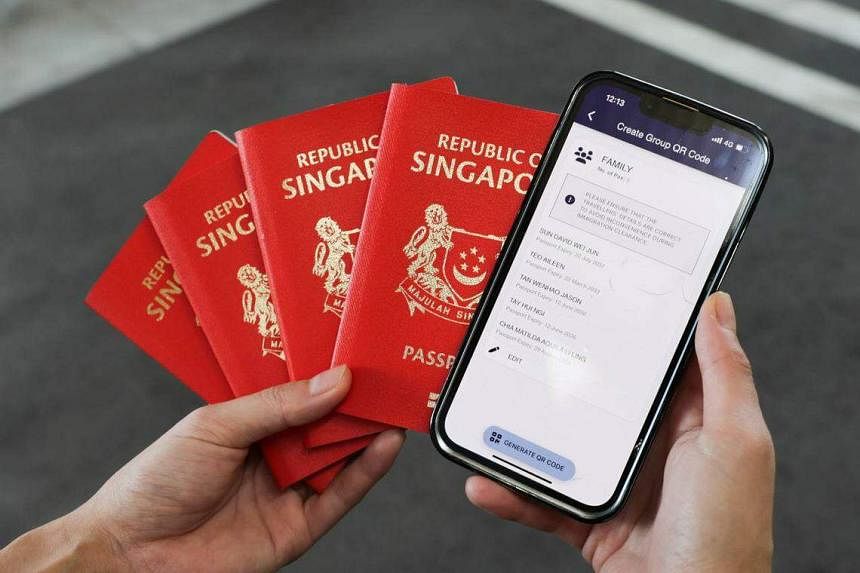Travelling by car? You can use QR codes to clear immigration from March 19


SINGAPORE – Travellers in cars crossing through Singapore’s Woodlands and Tuas checkpoints will be able to clear immigration using QR codes instead of their passports from March 19.
The QR codes can be used to clear individual travellers or groups of up to 10 people in the same vehicle, said the Immigration and Checkpoints Authority (ICA) on March 12.
The initiative requires travellers to first download the MyICA mobile application and fill in their passport details.
Singapore residents can have their details filled in automatically by using Singpass or by using their camera to scan the machine-readable zone – the two or three rows of characters – at the bottom of their passport biodata page.
Travellers can choose to generate either an individual QR code or a group one.
Generating an individual code will require the details of just one person, but to generate a group QR code, the details of each traveller in the group must be submitted through one person’s smartphone.
Details of up to 10 passports can be included in a group code, which can then be saved and given labels like “Family” or “Friends” in the application.
At the checkpoints, travellers have to scan the QR codes at the counters, and ICA officers will conduct face-to-face checks to confirm the information received on their side.
Those using a group code must travel in the same vehicle. QR codes that do not tally with the details and number of travellers in the vehicle will be rejected.
ICA said the QR codes generated are encrypted and can be retrieved and decrypted only by the authority.
It added that first-time visitors and those re-entering Singapore using a different passport from their last visit to the country will need to present their passport for immigration clearance. But they will be able to use QR codes for immigration clearance on subsequent trips.
Said Deputy Superintendent Seah Jing Ying from ICA operations division: “The overall waiting time can be reduced by more than 30 per cent if most car travellers use QR codes for immigration clearance.”
ICA estimates time savings of around 20 seconds for cars with four travellers and about one minute for cars with 10 travellers.

The QR code initiative is the first step towards the Automated Passenger Clearance System (APCS), which was previously called the Automated Passenger In-Car Clearance System.
In 2026, APCS lanes are expected to be introduced at Tuas Checkpoint, enhancing the process further by replacing face-to-face checks with biometric verification.
APCS lanes will be introduced at the redeveloped Woodlands Checkpoint in 2028.

The initiatives are part of ICA’s new clearance concept, which was announced in 2019 with the aim to provide faster and more secure immigration clearance.
ICA said that even after the QR code initiative is rolled out, travellers can still opt to present their physical passport as is the case today.
It added that it plans to progressively extend QR code clearance to other vehicular clearance zones at the land checkpoints, so that it can be used by travellers in other types of vehicles.
This article was first published in The Straits Times. Permission required for reproduction.